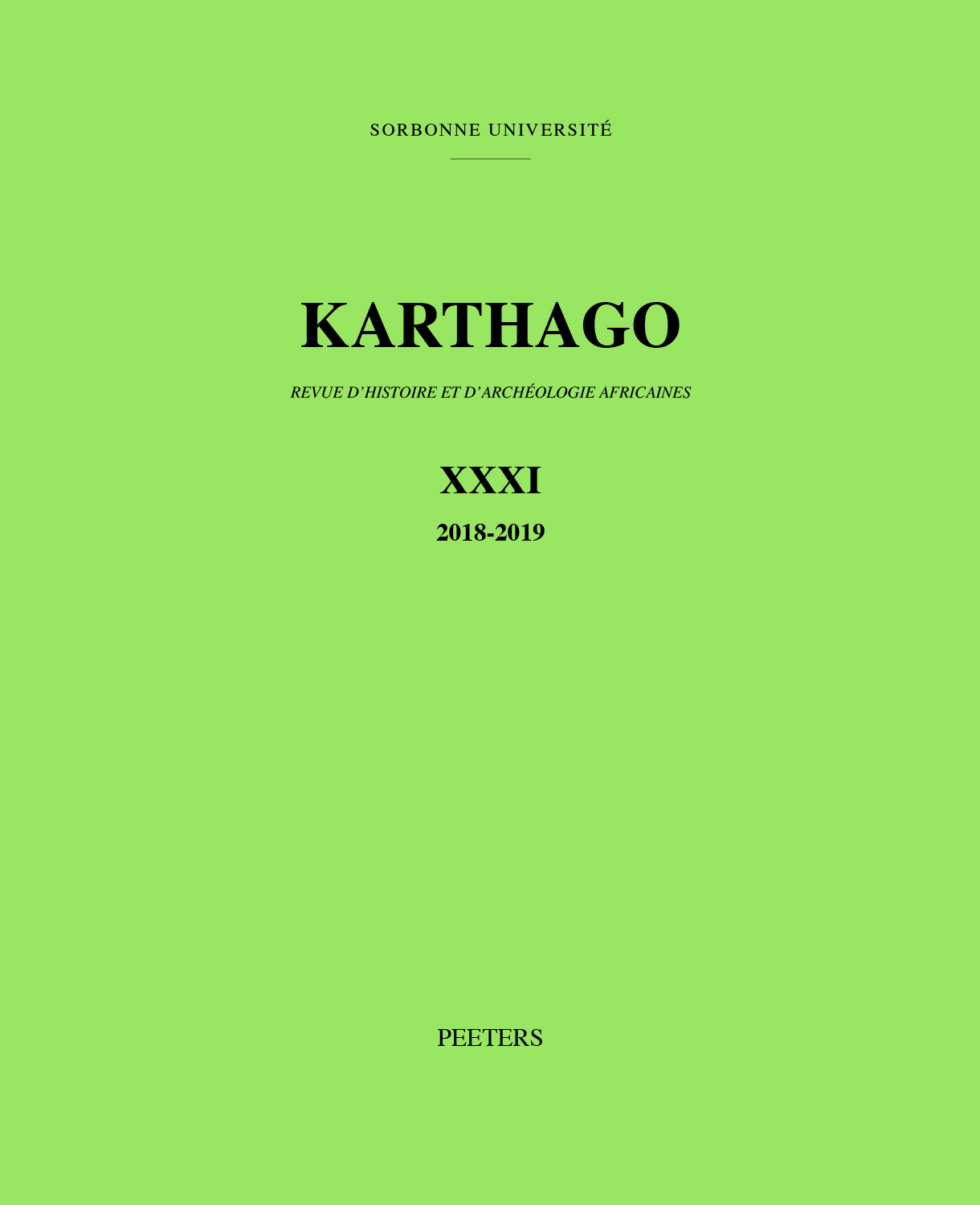 previous article in this issue previous article in this issue | next article in this issue  |

|
Document Details : Title: L'invention du Círculo del Estrecho Author(s): PAPI, Emanuele Journal: Karthago Volume: 29 Date: 2014-2015 Pages: 105-120 DOI: 10.2143/KAR.29.0.3170074 Abstract : Le modèle historiographique du Cercle du Détroit, conçu par M. Tarradell il y a plus de cinquante ans, connut un grand succès et il est encore en usage de nos jours. Selon cette théorie, les territoires de part et d’autre du détroit de Gibraltar formaient une unité organique dans laquelle le Maroc antique aurait été un appendice sous-développé de l’Andalousie. Ce chapitre propose une critique de cette vulgate à partir de trois arguments: 1) l’absence de toute référence à cette unité dans les sources antiques. Tous les témoignages indiquent en revanche une nette séparation entre Hispania et Mauretania, et le rattachement de cette dernière au milieu africain; 2) le modèle du Círculo del Estrecho est l’expression de l’idéologie coloniale africaniste qui s’affirma en Espagne à la fin du XIXe siècle; 3) la relecture de certaines reconstructions archéologiques et la prise en compte de nouvelles découvertes montrent une situation plus complexe que ce qui a été proposé. The historiographic model of the Circle of the Strait, conceived by M. Tarradel more than fifty years ago, has had much success, and is still in use today. According to this theory the territories around the Strait of Gibraltar formed part of an organic unity in which ancient Morocco would have been an underdeveloped appendix to Andalucia. This contribution proposes a critique of the vulgate through three arguments: 1) the absence of any reference in the sources to such a unity, Gibraltar being consistently referred to as the frontier between Hispania and Mauretania; 2) the basis of the model in a colonial perspective derived from the africanist ambitions of Spain at the end of the 19th century; 3) the review of some archaeological reconstructions and the consideration of new evidence from material culture that shows a more complex and articulated situation than that proposed to date. |
|
